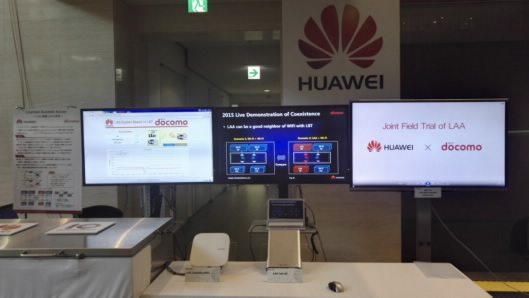Huawei has demonstrated a small cell running Wi-Fi and LTE in unlicensed spectrum. The demonstration, conducted with NTT DoCoMo, showed Wi-Fi and licensed-assisted access both operating in the 5 GHz band. Listen-before-talk was used for LTE.
Listen-before-talk is a protocol usually associated with Wi-Fi that requires radios to check for interfering signals before transmitting – LTE signals will interfere with one another, Wi-Fi signals don’t even initiate until the coast is clear.
With listen-before-talk, “LAA is able to co-exist adequately with a neighboring Wi-Fi system, while maintaining most of the performance advantages of LTE,” according to Huawei.
Huawei and NTT DoCoMo have been working together on LTE in unlicensed spectrum tests for more than a year. Small cells are the most likely path to market for the technology, so the demonstration of a small cell that supports both LTE and Wi-Fi in the 5 GHz band is a big step.
Huawei said that small cells are its fastest-growing business segment, and that it expects to ship 400,000 small cells this year.
LAA and LTE-Unlicensed were pioneered by Qualcomm to help mobile operators gain access to more spectrum. Some makers of Wi-Fi network gear have bristled at the possibility of sharing the unlicensed band with mobile operators. Qualcomm, a leading developer of chipsets for both LTE and Wi-Fi, has been busy filing comments with the Federal Communications Commission, which is trying to determine whether or not LTE in unlicensed spectrum requires government regulation.
“Any technology that meets a minimal set of technical rules is allowed in unlicensed spectrum, and no one using this spectrum has any priority over anyone else,” wrote Qualcomm’s Dean Brenner, SVP of government affairs, in a recent blog post. Qualcomm said that throughput increases when the two technologies are used together. The company’s tests showed that four Wi-Fi nodes combined with four LTE-U nodes enabled 38% more throughput than eight Wi-Fi nodes.
“In many cases, replacing a Wi-Fi node with an LTE-U node improves the throughput for nearby Wi-Fi users,” wrote Brenner in his blog post.

